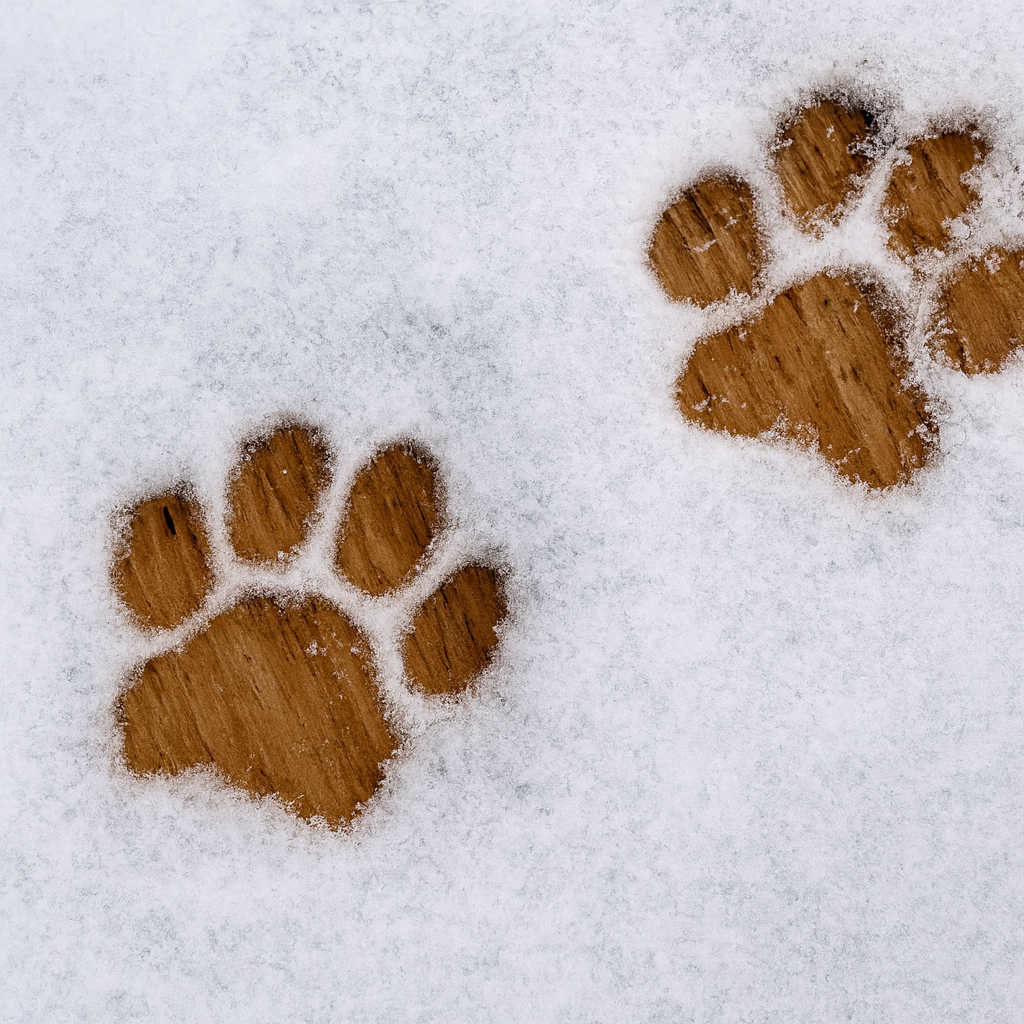
Why Winter Can Be Tough on Dog Paws?
As temperatures drop and sidewalks frost over, dog owners often focus on jackets and warm bedding. But one area is often overlooked: your dog’s paws.
Cold weather, ice, salt, and dry air can all contribute to cracked pads, irritation, and discomfort. Knowing how to support your dog’s paw health in winter can make all the difference in their comfort and mobility.
1. Understand the Risks: What Happens to Paws in Winter?
Winter weather brings multiple challenges for a dog’s paws:
- Ice and snow buildup between the toes
- Salt and de-icers that can dry and irritate skin
- Frozen surfaces that cause cracking and abrasion
- Dry indoor air that worsens dehydration of paw pads
If your dog begins licking their paws excessively or limping, it might be time to check for signs of dryness or sensitivity.
2. Keep Paws Clean After Walks
Each walk in winter brings your dog in contact with road salt, sand, or dirty slush. To reduce risk of irritation:
- Wipe paws gently with a damp cloth after walks
- Dry them thoroughly, especially between the toes
- Consider a warm water rinse once a day
➡ Pro Tip: Keep a small paw towel or wipe kit by your front door.
3. Moisturize and Care with a Natural ointment
Hydrated paw pads are less likely to crack or become irritated. Applying a plant-based ointment can:
- Soften the skin
- Create a natural barrier against ice, salt, and friction
- Support the skin’s natural resilience without artificial additive
Copper Hawk Natural Animal First Aid is formulated with:
Petrolatum,
- Plantain (Plantago lanceolata) – known to support skin regeneration
- Gotu Kola (Centella asiatica) – traditionally used to improve skin strength
- Figwort (Scrophularia nodosa) – used to soothe and protect
- Yarrow(Achillea millefolium) – shows anti-inflammatory activity in animal model
- Pau d’Arco (Tabebuia impetiginosa ) – shows invitro anti-microbial properties
➡ Apply a small amount of balm before walks and again after cleaning the paws.
🔗 Learn more about Copper Hawk ointment →
4. Consider Dog Booties (If Your Dog Tolerates Them)
Some dogs accept protective footwear; others don’t. If your dog is comfortable wearing booties:
- Choose breathable, water-resistant models
- Make sure they fit snugly without restricting movement
- Clean them after each walk
If your dog dislikes booties, an ointment like Copper Hawk Natural Animal First Aid can be an effective alternative.
5. Create a Paw-Friendly Home Environment
Winter is also harsh indoors:
- Use a humidifier to reduce dry air
- Place a soft mat or blanket where your dog often rests
- Avoid harsh chemical cleaners on floors
Supporting paw health is a 24/7 job—both inside and out.
6. Regular Paw Checks = Early Intervention
Make it a habit to:
- Check for cracks, redness, or foreign objects
- Keep nails trimmed to prevent strain and breakage
- Clean between toes weekly to avoid buildup
➡ Combine this routine with balm application to make it a positive, bonding experience.
✅ Conclusion: Winter Paw Care Made Simple
Your dog’s paws are their foundation. Supporting them during cold weather doesn’t have to be complicated. With daily cleaning, regular checks, and the use of a natural ointment like Copper Hawk Natural animal First Aid, you can keep your companion comfortable all winter long.
🐾 Ready to Support Your Dog’s Paws Naturally?
Try Copper Hawk Natural Animal First Aid — the topical ointment trusted by pet parents for daily skin support and recommended by vets.
#DogPawCare #WinterPets #NaturalAnimalCare #CopperHawk
